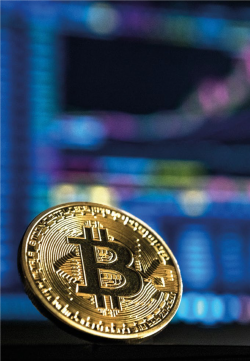Groundbreaking forensic finance techniques have been used to uncover evidence of significant use of bitcoin to conduct illegal activities, including drug, weapon and pirated software sales.
Sex, drugs and bitcoin

“The blockchain technology that underpins bitcoin holds significant promise for revolutionising many industries, but this sort of illegal activity risks stunting the adoption of this technology and limiting the potential benefits to society,” says one of the authors of the study, Professor Talis Putnins of UTS Business School.
Professor Putnins and PhD student Jonathan Karlsen, along with a researcher from the University of Sydney, have tracked illegal bitcoin use worldwide using data from 2009 to 2017 with the aim of helping regulators understand the size of the task they face in attempting to monitor and regulate the digital currency.
The research found that close to half of all transactions in bitcoin are associated with buying and selling illegal goods and services, while about one in three bitcoin users is involved in such activity.
Illegal activity risks stunting the adoption of this technology and limiting the potential benefits to society
“Users involved in illegal activity are very active in terms of buying, selling and trading, whereas legal users are largely buying and holding the cryptocurrency,” Professor Putnins says, explaining the difference between those two results.
In the paper ‘Sex, Drugs, and Bitcoin’, the researchers also reveal that about one-quarter of the total dollar value of transactions in bitcoin is associated with illegal transactions.
“The FBI seizure of more than $4 million in bitcoin from the now defunct online drug marketplace The Silk Road provides some idea of the scale of the problem,” says Professor Putnins.
The researchers developed ground-breaking methods for identifying illegal bitcoin transactions to undertake the research. Their starting point was tracing the activity of bitcoin users who had been caught by the FBI and other authorities while engaged in online criminal activity.
From tracking known criminal activity, the researchers then used two methods to quantify the extent of illegal activity, including that yet to be caught by authorities.
The first method involved analysing the trade networks of those known to be involved in illegal activity, using information ‘scraped’ from the dark web – an area of the internet that can’t be found using traditional search engines.
The second method was to uncover characteristics that distinguish users involved in illegal activity from those involved in legal activity. For example, the researchers measured the extent to which bitcoin users took actions to conceal their identities and trading records.
“A lot of people think bitcoin is highly anonymous and untraceable, that it is outside the view of regulators and authorities, but once you start digging into it it’s surprising how much sense you can make of it,” says Professor Putnins.
The techniques the researchers have developed can be used by legal authorities in surveillance activities. “In the hands of regulators or federal police, our methods potentially provide a lot of value in understanding what is going on – and cracking down on it,” Professor Putnins says. “More broadly, much of what we develop is transferable to analysing other blockchains.”
The paper describes how bitcoin has become the ‘PayPal’ of the dark web, which is estimated to contain approximately 30,000 domains.
“Most people don’t know what is going on in the dark web. Now we have hard facts to put to the picture, to inform policymaking, regulation and surveillance.”
Sex, Drugs, and Bitcoin: How Much Illegal Activity Is Financed through Cryptocurrencies?, Sean Foley, Jonathan R Karlsen and Talis J Putnins, The Review of Financial Studies, Volume 32, Issue 5, May 2019
UTS Experts: Talis Putnins
